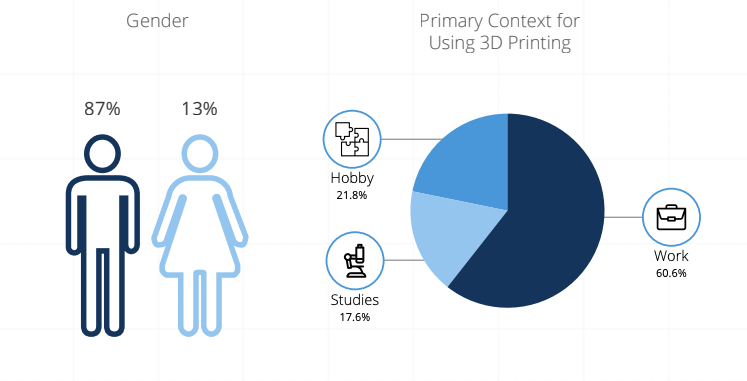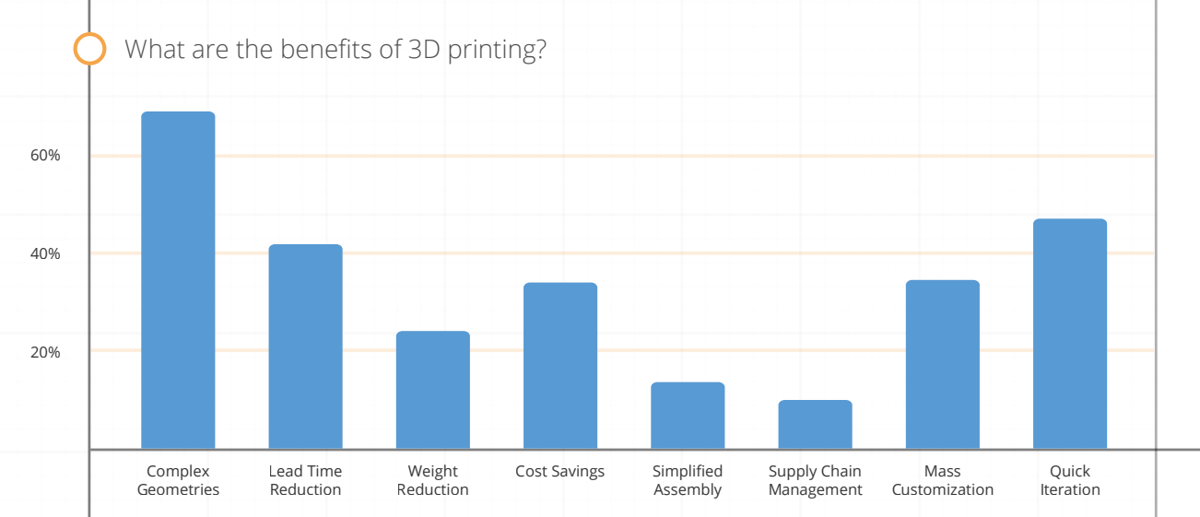3D printing company Sculpteo recently surveyed professionals, their use of and plans for 3D printing. Answered by some 1,300 people, the results provide an in-depth overview of the mindset and makeup and intentions toward a fast-moving fabrication process that has seen widespread adoption across numerous industries. Piled into a downloadable ‘State of the Industry’ report, Sculpteo explains the 2019 edition is its biggest yet.
Following the expected trends of speed, cost-cutting, the report finds mass production rubbing shoulders with maturing tools such as generative design. Multi-material and metal also feature, with industry focus towards Bioprinting, medical, and sustainability sectors.
Perhaps unsurprisingly, the cross-sectional 3D printing user is male, between 25 and 35, with an educational background in Engineering and some five years of experience with 3D printing already under their belt. The company is quick to point out that at 13%, the representation of women in 3D printing is at its highest, indicating that it is increasing.
A commanding majority of three-fifths use 3D printing professionally, with an even split of one-fifth apiece for educational and hobbyist users.

Most respondents use the technology at work with 70% doing so at least a few times per month. Wondering where these people are working? The specified industry using 3D printing the most is “Industrial Goods” with 13.5%, while “High Tech” comes in second at 10.6%.
The report highlights that 3D printing predominantly finds its use for prototyping and proof of concept needs. As you might expect, plastics are the most popular materials, followed by resin. Fused deposition modeling (FDM) dominates. However, SLS, Jet Fusion, and Polyjet are growing, with users turning to external services in place of in-house machines.
Among respondents, the most noted benefits of 3D printing were the ability to create complex geometries and quickly iterate designs. Lead reduction times and cost savings are benefits also up there.
However, 3D printing has been shown to cause a few problems too, with almost 50% saying quality control is their top challenge when using a 3D printer. To improve and grow, the continued expansion of materials choice and more reliable technologies are necessary.
Last year 48% of respondents invested more than $10k in 3D printing. More than half of those polled believe the technology will have a significant role in business, manufacturing, and individual life in the future.
To peruse Sculpteo’s findings in your own time, you can check out the report (a downloadable PDF – email registration required) here.

License: The text of "Professional 3D Printing: The State of the Industry" by All3DP Pro is licensed under a Creative Commons Attribution 4.0 International License.